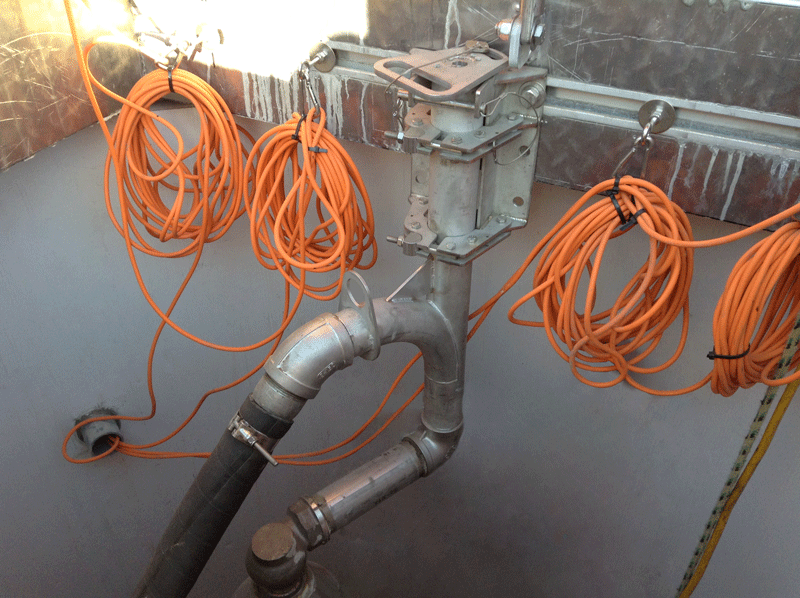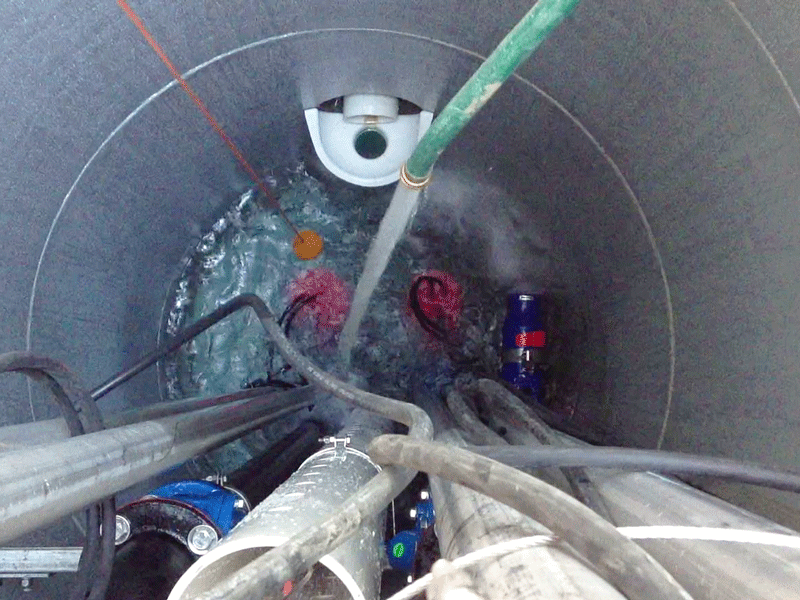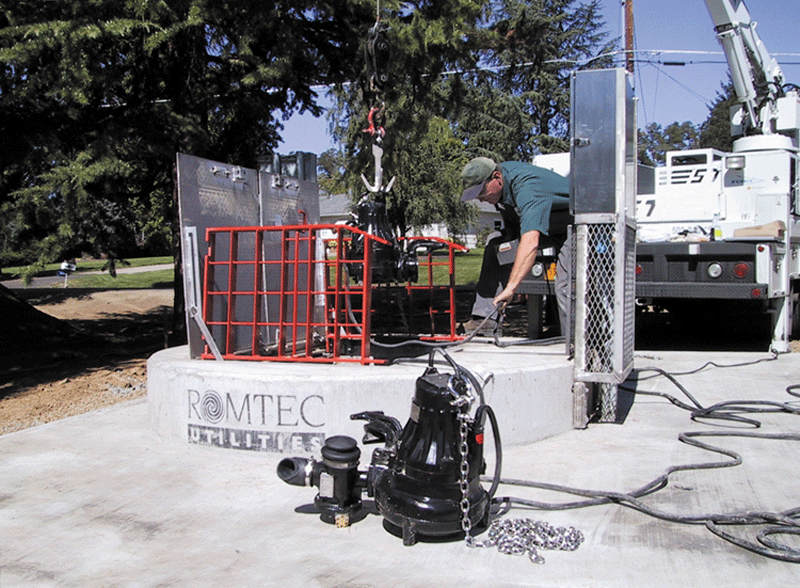
Romtec Utilities designs, manufactures, and supplies wastewater lift stations for all types of projects and water pumping scenarios. Designing a functional wastewater lift station can sometimes include unique design challenges. One fairly common example of a design challenge is integrating mixing and/or water agitation to the pumping system. Adding a mixer or agitator can be useful under the right conditions, and it is important to understand what conditions these devices handle, benefits they can provide lift station owners, and how these devices work.
Most wastewater lift stations do not require agitation or mixing if the collection system is designed correctly, but in some scenarios, it is the simplest solution. FOG (or Fats, Oils, and Grease) is a problem for wastewater lift stations. These substances build up on components in the well and can prevent the system from operating correctly. Frequent mixing of the wastewater can prevent this build-up or at least slow it down. Another issue related to FOG in a wet well is a floating layer of grease. When the layer is floating, the mixer or agitator must be able to affect that buildup as well. This is also an issue with suspended solids.

Solids in a well range from wet-wipes and rags to diapers and toys, and all of them can be difficult to pump. Mixing and agitating devices “re-suspend” these solids, preventing them from grouping together to form a blockage or a large mass that will clog the pumps. This is also true of sediment that can form at the bottom of the well. Mixers and agitators also are used to prevent wastewater from turning septic. Septic conditions form when the wastewater becomes anaerobic, which can happen when bacteria in stagnant wastewater consumes all the oxygen in the water. Mixing and agitation mix oxygen back into the water, preventing it from turning septic.
Mixing and agitating wastewater prevents or slows a number of maintenance concerns in some wastewater pumping applications. By preventing solids build up, issues such as clogging and component failure or error can be avoided. This can be beneficial in terms of the long-term functionality of the lift station, but it can also prevent more drastic events like an overflow scenario from level sensing failure. Sediment on the bottom of a well can negatively affect pumps by impeding water intake, creating cavitation and even air binding in severe circumstances. Septic water can corrode a number of lift station components from the well structure to the cables. Mixing and agitation can improve all of these scenarios in pumps that face the previously described issues.

There are a number of methods for mixing and agitating wastewater. One popular option was invented by Flygt and is called a mix-flush valve. This device diverts a small stream of the pumped wastewater back into the well, creating a mixing motion. Recently, this and similar devices have become available on other pumps brands as well. Another more elaborate device is a hydrospear. This device takes a portion of the wastewater and sprays it down from the top of the well. This creates movement on the water surface and below, preventing build-up of FOG.
Other devices are more obvious looking and resemble blenders or boat propellers. These devices simply circulate the wastewater and keep solids from collecting together. Newer versions of these devices are effectively pumps in and of themselves; however instead of actually pumping the wastewater, it simply gets macerated and discharged back into the well.
Mixing and agitating in wastewater lift stations should be viewed as a necessary evil. If it can be avoided through the installation of bar screens or grease traps, it is almost always better for the whole wastewater system. In some scenarios however, mixing and agitating cannot be avoided. Understanding the water conditions for your specific site and pumping conditions is important and will help in choosing the right mixing device. Let Romtec Utilities help you on your wastewater lift station if you have concerns about the presence of solids, FOG, sediment, or septic water.
